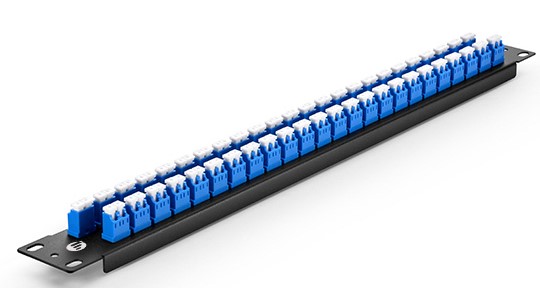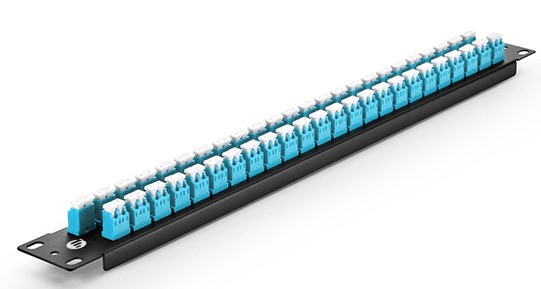48 Port Patch Panel—Best Choice
As we have learned before, port density is a critical concern when choosing a patch panel. Usually the patch panel with more ports enables more connectivity. Common patch panels are always designed in 12 or 24-port configurations. Does it mean that the more ports one patch panel has, the better it will be? However, as far as I am concerned, it may not always be versatile because more ports means more money. Sometimes you just want a patch panel for household use, then a 128-port patch panel is a waste and you need to take care of the ports idled. If you haven’t determined which system you will apply it to, a 48 port patch panel may be a good choice.
Benefits of 48 port patch panel
In fact, a 48 port fiber or copper patch panel is totally enough for home and office use. And the fiber patch panel also has two types as singlemode and multi-mode one. And the advantage of using a 48 port patch panel is that it allows manual monitoring, testing, switching, routing, and other maintenance to be handled quickly because the cables in the front that connect to the more permanent cables in the back are configured and made so that changes can be made quickly and easily when needed.
48 Port Copper Patch Panel
With the copper patch panel, each pair of wires has an independent port. So copper patch panels offer simple and efficient interconnection in Ethernet applications. And when the front copper touches the copper in the back, a little bit of the signal is lost but not enough to worry about. Take the HD-48P-E1U 48-Port 1U Rack-Mount UTP Blank Keystone/Multimedia Patch Panel as an example, it manages and organizes the cabling in your network. The rear cable manager keeps cables neat, tidy and efficiently organized on the back of the panel. Ports are clearly numbered to help you identify connections.
Both the copper and fiber patch panels can provide you with flexibility and scalability, because the network can grow and change on-demand, without the costly, labor-intensive hassle of replacing channels end-to-end. For more information about fiber and copper patch panel, you can refer to this Which One to Choose? Fiber or Copper Patch Panel.
Singlemode and Multi-mode Fiber Patch Panel
The fiber patch panel, 96 Fibers, 48 Ports LC Duplex 9/125 Singlemode Fiber Adapters, 1U High 19" Fiber Patch Panel from FS.COM, offers the highest port concentration and bandwidth over high performance structured cabling to all network areas, whether in the data centre or in the high performance LAN. By managing varying port densities and speeds in a single high-density patch panel, you save valuable rack space, helping to lower data center costs.
And the 96 Fibers, 48 Ports LC OM3/OM4 Multimode Adapters, 1U High 19" Fiber Patch Panel can be used as a junction for 50/125 Multi-Mode Fiber with LC connectors. The panel fits a standard 19" rack, and the LC connectors are standard sized too. Its high-density and easy maintenance allow a low initial investment cost. With it, you can only buy the devices you need now, while leaving room for future expansion.
Conclusion
In a word, a 48 port patch panel makes it easy to organize the fibers in an business or home network.With a 48 port fiber patch panel, you can achieve a better cable management. Of course, one could skip the patch panel and just connect all connectors directly into the hub, however, you need to label the patch panel so you know which room the cable run goes to. But it is tougher to read than labels on a patch panel and also there is risk of having the cable labels fall off. All I want to inform you is that a 48 port patch panel is not expensive in FS.COM. Please feel free to contact us.

